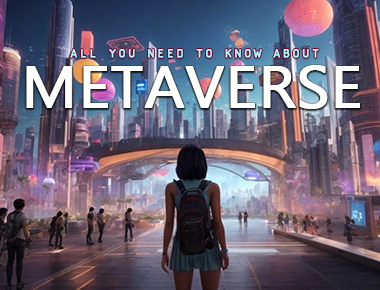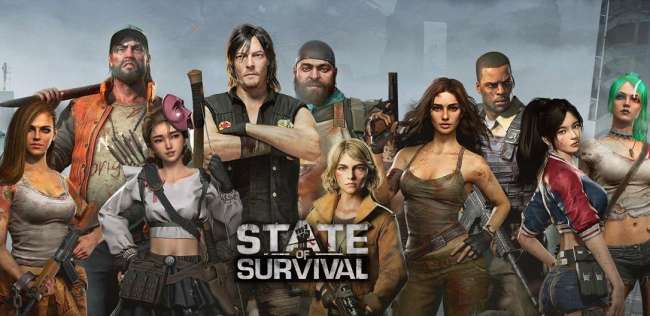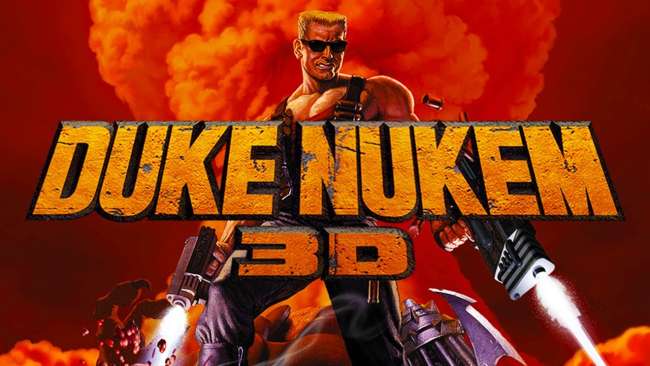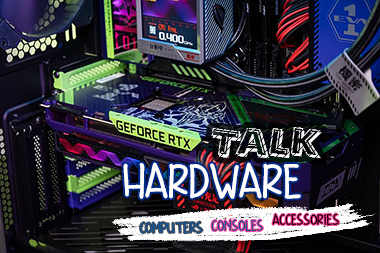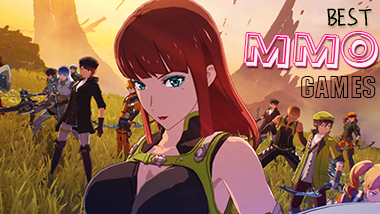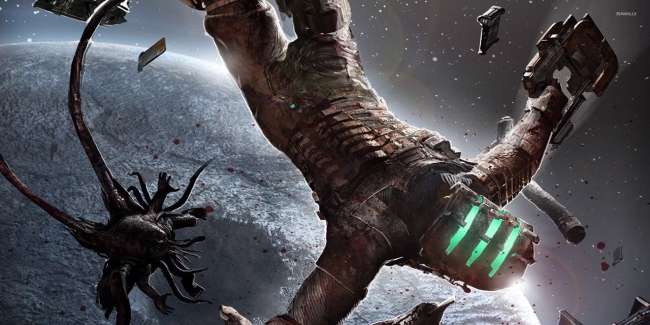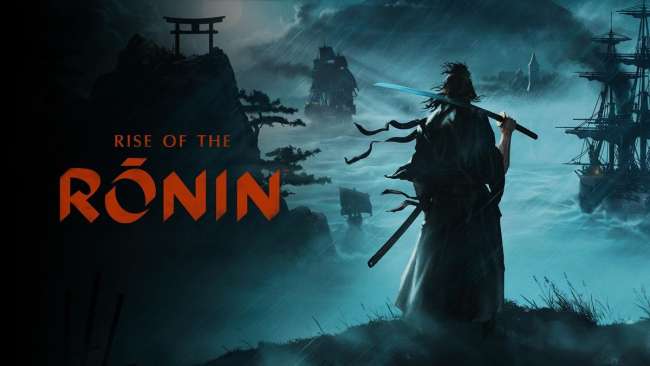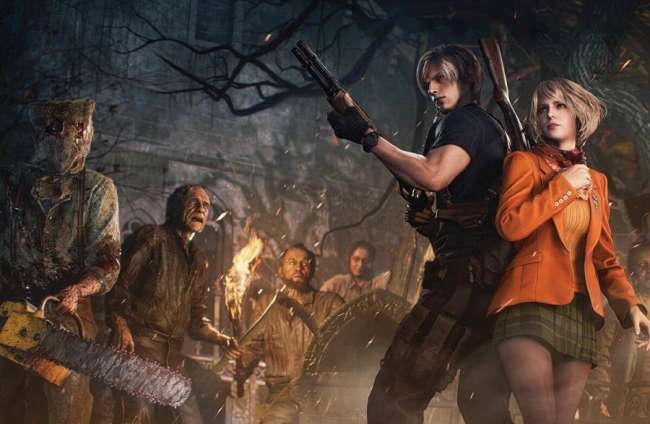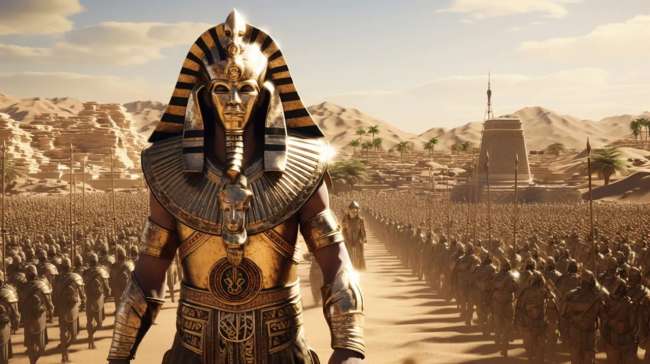In The Spotlight
The life simulation genre has long captivated gamers, offering immersive experiences that allow players to craft and control virtual lives. From managing daily routines to building intricate relationships, these games provide a sandbox for creativity and exploration. Titles like The Sims have dominated this space for years, setting benchmarks for depth and engagement. However, the gaming landscape is ever-evolving, and new contenders continually emerge, aiming to redefine the genre's boundaries. One such promising entrant is InZoi, a game that has been generating buzz and anticipation among simulation enthusiasts. Developed by inZOI Studio and published by Krafton, InZoi is poised to offer a fresh perspective on life simulation, blending traditional elements with innovative features that promise to enhance player immersion and creativity. As we delve deeper into what InZoi brings to the table, it's essential to understand its origins, gameplay mechanics, and the unique aspects that set it apart in a crowded market.
The Final Fantasy series is one of the most celebrated franchises in gaming history. With its beginnings in 1987, the series not only helped shape the role-playing game (RPG) genre but also cemented itself as a cultural phenomenon. Developed and published by Square Enix (formerly Squaresoft), Final Fantasy has continually pushed the boundaries of what RPGs can achieve, from storytelling and gameplay to cutting-edge visuals and musical compositions.
In the world of open-world video games, few titles have left a lasting impression quite like Red Dead Redemption 2 (RDR2). Released in October 2018 by Rockstar Games, this sequel to 2010's Red Dead Redemption transported players to the dying days of the American Wild West. More than just a game, Red Dead Redemption 2 became a cultural phenomenon, captivating players with its vast open world, gripping narrative, and unparalleled attention to detail. But what makes RDR2 stand out in the crowded landscape of modern gaming? Let’s dive into what makes this game a masterpiece.
HOT
-

World of Warcraft: The War Within brings players to the depths of Azeroth in a way never before explored. As the first chapter of the Worldsoul Saga, it introduces a narrative that is as engaging as it is ambitious. The expansion's setting focuses on Azeroth's subterranean mysteries, plunging players into a battle against the Harbinger of the Void, a powerful force leading the nerubian armies.
The narrative ties seamlessly into existing lore, expanding on the enigma of Xal’atath, a character who has captivated players for years. Her reappearance is masterfully intertwined with Alleria Windrunner, a dynamic that blends tension and unexpected emotional undertones. Fans of WoW’s storytelling will appreciate the careful balance of lore-rich depth and compelling character arcs.
Mechanically, the expansion brings significant changes that cater to diverse playstyles. One standout feature is Delves, mini-dungeons designed for solo or small-group experiences. With adjustable difficulty levels and rewards comparable to Mythic dungeons, Delves cater to a broader audience while maintaining the challenge hardcore players seek. These areas allow players to explore without the pressure of coordinating a large group, adding accessibility without sacrificing depth.
Another highlight is the Follower Dungeons. Building on systems like the Mission Table and Island Expeditions, these dungeons allow players to team up with customizable AI companions. This feature creates an opportunity for more personal storytelling as players traverse Azeroth's depths with uniquely designed allies.
The Hero Talents system introduces a fresh layer of customization, allowing characters to grow in distinct ways. Additionally, the Warbands system simplifies account-wide progression, especially for players managing multiple characters. This feature is a welcome quality-of-life improvement for longtime fans who enjoy exploring different classes.
Visually, The War Within impresses with its atmospheric design. Areas like Khaz Algar and Sanctification demonstrate Blizzard’s ability to craft diverse environments that feel alive and immersive. The subterranean world exudes a sense of mystery, supported by an evocative soundtrack that heightens the experience.
The expansion delivers on nearly all fronts, reinvigorating World of Warcraft with innovation and depth. The War Within sets the stage for the Worldsoul Saga with an unforgettable dive into Azeroth's hidden realms.
-

Another Crab's Treasure by Aggro Crab is a delightful and quirky action-adventure that breathes new life into the "soulslike" genre. Set in a vibrant underwater world, the game’s premise is as absurd as it is captivating: you play as Kril, a hermit crab on a quest to reclaim his repossessed shell, armed with nothing but resourcefulness and sheer determination.
The first thing that strikes you is the art style. The underwater setting is beautifully rendered with a mix of vibrant coral reefs, murky trenches, and bustling aquatic communities. Each zone feels distinct and alive, filled with strange and amusing sea creatures that range from adorable to downright intimidating. The whimsical design is complemented by a soundtrack that strikes a balance between serene melodies and intense battle themes.
Gameplay is where Another Crab's Treasure shines. The combat system, inspired by the "soulslike" formula, is both challenging and accessible. Kril’s ability to improvise shields from discarded objects like tin cans, bottle caps, and shells adds a unique layer of strategy to the game. Each improvised shield comes with its own quirks and durability, forcing you to adapt constantly. The game encourages exploration, with hidden treasures and lore scattered throughout the ocean floor.
What sets this title apart from other soulslike games is its humor and charm. While the difficulty can be punishing, it never takes itself too seriously. The writing is clever, and the NPCs, from fellow crustaceans to eccentric fish, are bursting with personality.
If there’s a drawback, it’s that the novelty of the shield mechanic can wear thin in later stages, as some encounters feel repetitive. However, the game’s charm and creativity more than make up for it.
Another Crab's Treasure is a fresh take on the genre, combining humor, challenge, and heart. It’s a treasure worth diving for.
-

Like a Dragon: Infinite Wealth takes the beloved series in bold new directions while staying true to the charm and wit that fans have come to adore. As the latest entry in RGG Studio's acclaimed saga, this game expands the universe of Like a Dragon (formerly Yakuza) with an ambitious storyline, enhanced gameplay mechanics, and a breathtakingly detailed world.
The game continues the journey of Ichiban Kasuga, the lovable underdog introduced in Like a Dragon (2020). This time, the story takes a surprising turn as Ichiban finds himself stranded in Hawaii, thrust into an unfamiliar environment teeming with challenges and opportunities. The narrative expertly balances heartfelt drama with the series' signature comedic undertones. Themes of loyalty, identity, and personal growth are explored deeply, and the writing is sharp, delivering moments that are both gut-wrenching and laugh-out-loud funny.
One of the most exciting updates in Infinite Wealth is the expanded world. Hawaii is a vibrant playground, offering players a mix of urban and tropical settings to explore. The region feels alive with its bustling streets, serene beaches, and quirky NPCs, who often serve as gateways to the game’s colorful side quests. These “substories” remain a highlight, blending absurd humor with surprising emotional depth.
Combat retains the turn-based system introduced in Like a Dragon, but it feels more refined and dynamic. The addition of environmental interactions, new party synergy attacks, and expanded job classes inject fresh life into the gameplay. Whether you’re commanding Ichiban’s party in a strategic boss fight or using improvised weapons like bicycles against street thugs, every battle is a spectacle of chaos and creativity.
Mini-games, a hallmark of the series, are plentiful and diverse. From surfing competitions to running a Hawaiian beachfront business, there’s no shortage of distractions. The "Dondoko Island" mode, where players manage their own resort, is especially addictive and adds a surprising level of depth.
Visually, Infinite Wealth is a feast for the eyes. The lush environments of Hawaii are rendered with meticulous attention to detail, from the crystal-clear waters to the bustling markets. Character models are stunningly lifelike, bringing the cast’s personalities to life with nuanced expressions and animations.
Like a Dragon: Infinite Wealth is a bold evolution of the franchise. Its mix of heartfelt storytelling, engaging combat, and diverse activities ensures it stands out as one of 2024’s best RPGs. Whether you're a long-time fan or a newcomer, this is a journey worth taking.
-

Dragon's Dogma II marks a triumphant return for Capcom’s beloved action-RPG series, blending familiar mechanics with a slew of impressive updates. Set in a sprawling fantasy world brimming with life and danger, the game builds on the foundations of the original while delivering a richer and more immersive experience.
The story centers around the Arisen, a chosen hero destined to challenge colossal monsters and navigate the intricate relationships within the game’s lore-rich world. While the narrative starts with a familiar premise, it deepens as you explore themes of power, destiny, and the eternal cycle of life and death. The storytelling is nuanced, offering surprising twists and a cast of well-crafted characters that leave a lasting impression.
Combat is the shining star of Dragon's Dogma II. The diverse array of classes, or vocations, returns, including the traditional Fighter, Mage, and Strider, as well as hybrid classes like Mystic Knight and Magick Archer. The combat feels fluid and impactful, allowing players to scale towering enemies in a way reminiscent of Shadow of the Colossus. Whether wielding swords, bows, or powerful spells, each battle demands strategy and skill, making every encounter thrilling.
The pawn system—a standout feature from the original—makes a strong comeback, enabling players to recruit customizable AI companions. These pawns learn from your playstyle and provide invaluable assistance in combat and exploration. Their intelligence and adaptability are significantly improved, making them feel more like genuine allies than mere tools.
Visually, Dragon's Dogma II is stunning. Powered by the RE Engine, the environments are detailed and atmospheric, from lush forests to dark, foreboding caves. The day-night cycle adds an extra layer of immersion, with night bringing genuinely terrifying challenges.
In short, Dragon's Dogma II is a masterful sequel, offering fans and newcomers an epic journey filled with adventure, danger, and heart-pounding action.
In a groundbreaking move that underscores the fusion of artificial intelligence (AI) with interactive entertainment, Microsoft has unveiled "Muse," a generative AI model poised to redefine game development and player experiences. This initiative, a collaboration between Microsoft's Research Game Intelligence team and Ninja Theory, an Xbox Game Studios subsidiary, represents a significant leap toward integrating AI into the gaming realm.
The life simulation genre has long captivated gamers, offering immersive experiences that allow players to craft and control virtual lives. From managing daily routines to building intricate relationships, these games provide a sandbox for creativity and exploration. Titles like The Sims have dominated this space for years, setting benchmarks for depth and engagement. However, the gaming landscape is ever-evolving, and new contenders continually emerge, aiming to redefine the genre's boundaries. One such promising entrant is InZoi, a game that has been generating buzz and anticipation among simulation enthusiasts. Developed by inZOI Studio and published by Krafton, InZoi is poised to offer a fresh perspective on life simulation, blending traditional elements with innovative features that promise to enhance player immersion and creativity. As we delve deeper into what InZoi brings to the table, it's essential to understand its origins, gameplay mechanics, and the unique aspects that set it apart in a crowded market.
Fortnite has never been one to rest on its laurels—and the latest evolution in its ever-expanding universe is no exception. With the unveiling of its groundbreaking new mode, fans around the globe are abuzz with excitement, debates, and a flurry of creative speculation. This fresh take on the battle royale formula is not merely a tweak or a seasonal event; it’s a bold statement that Fortnite is ready to reinvent itself once again.
First-person shooters (FPS) have been one of the most influential and enduring genres in video game history. From the fast-paced, pixelated action of the early 90s to the photorealistic battlefields and deep multiplayer experiences of today, FPS games have constantly evolved, adapting to new technologies, player expectations, and cultural shifts.
Doom, released in 1993, is often credited as the defining game of the genre, but its roots go back even further. Early experiments with first-person perspectives and shooter mechanics laid the groundwork for the revolutionary titles that followed. Over the years, FPS games have moved from simple single-player experiences to global competitive phenomena, with professional tournaments, esports leagues, and massive online communities.
This article takes a deep dive into the history and transformation of FPS games, tracing their origins, major innovations, cultural impact, and the exciting future that lies ahead.
The gaming industry has exploded in recent years, and one of the biggest phenomena driving its growth is live streaming. Millions of gamers now watch and interact with streamers across platforms like Twitch, YouTube Gaming, and Facebook Gaming. What started as a niche hobby has evolved into a thriving industry where streamers can entertain audiences, build communities, and even make a living.
Starting a gaming channel might seem straightforward—just turn on your webcam, launch your favorite game, and go live—but becoming a successful streamer requires much more than that. It takes dedication, planning, and an understanding of how to engage an audience. Viewers have countless options when it comes to choosing content, so standing out requires more than just skill in a game; it requires personality, consistency, and smart content strategies.
This guide will cover everything you need to know about starting your own gaming channel, from choosing the right platform and setting up equipment to building an audience and monetizing your content. Whether you're looking to stream as a hobby or turn it into a career, understanding the fundamentals will give you the best chance of success.
The video game industry has undergone a massive transformation in recent years, and one of the most significant shifts has been the rise of indie games. Once seen as a niche segment, indie games have now become a major force in gaming, competing with AAA titles in terms of popularity, innovation, and critical acclaim. Small, independent studios have managed to break through the industry's traditional barriers, proving that creativity and originality can outshine massive budgets.
Indie games have redefined what gaming can be by embracing risk-taking, offering unique artistic styles, and exploring narratives that major publishers might consider too experimental. With digital distribution platforms like Steam, Itch.io, and the Epic Games Store making it easier for developers to reach global audiences, indie games are no longer an underground movement—they are shaping the future of gaming.
This article explores how indie games have risen to prominence, the innovations they bring to the industry, the challenges faced by small studios, and what the future holds for independent game development.
FIFA Mobile, now officially rebranded as EA Sports FC Mobile, is a mobile football simulation game developed by EA Sports. Since its initial release in 2016, it has undergone significant evolution, bringing new features, mechanics, and improvements to keep football fans engaged. The game offers an exciting blend of authentic football gameplay, team-building mechanics, live events, and competitive online modes that allow players to build their dream squads and compete globally.
Unlike console or PC FIFA games, FIFA Mobile is designed specifically for smartphones and tablets, focusing on a streamlined football experience that emphasizes short, fast-paced matches and tactical team-building. The game delivers real-life players, clubs, and leagues from across the world, giving football enthusiasts the chance to play with their favorite stars in a dynamic, ever-changing football environment.
State of Survival is a mobile strategy game set in a post-apocalyptic world where the remnants of humanity struggle to survive against hordes of zombies. Developed by KingsGroup Holdings and released in 2019, the game offers a blend of survival mechanics, base-building, real-time strategy combat, and role-playing elements. Unlike traditional survival horror games that focus on action and horror elements, State of Survival leans more toward strategic planning, resource management, and multiplayer alliances.
The game immediately captured the attention of players due to its unique combination of real-time strategy and hero-based combat. It presents an immersive world where players must rebuild civilization while defending their settlements from the relentless undead. As players progress, they must recruit heroes, form alliances, and engage in large-scale battles against both AI-controlled enemies and other players in PvP conflicts.
In the bustling landscape of video games, very few titles manage to achieve what Genshin Impact has accomplished since its release. Launched in 2020 by miHoYo (now known as HoYoverse), Genshin Impact quickly transformed from a visually impressive curiosity to a global sensation. This open-world action RPG captured the hearts of millions with its stunning visuals, compelling storyline, diverse characters, and innovative gameplay mechanics. It's not just another open-world game; it's a sprawling, interconnected universe filled with adventures, challenges, and mysteries at every turn.
Set in the fantasy realm of Teyvat, Genshin Impact immerses players in a deeply engaging narrative. Players take on the role of the Traveler, a mysterious protagonist separated from their sibling by an unknown deity and thrust into the diverse and vibrant world of Teyvat. Their mission is straightforward yet monumental: to reunite with their lost sibling and unravel the hidden truths behind this intriguing universe. What begins as a simple quest evolves into an epic journey involving political intrigue, elemental magic, powerful deities known as Archons, and the bonds of friendship forged along the way.
In the early 1990s, the gaming world was flooded with mascots trying to capture the magic of Sonic and Mario. But nestled quietly among them was a green amphibian with a crown, a cape, and a surprisingly rich sense of humor—Superfrog. Released in 1993 by the British developers at Team17, this game wasn’t just another mascot platformer. It was, in many ways, a love letter to the Amiga scene—a platform known more for its depth than its flash.
What made Superfrog stand out wasn’t just its responsive controls or colorful visuals—it was how it blended charm, challenge, and playfulness without trying too hard to be “cool.” It didn’t rely on attitude or edgy humor like some of its contemporaries. Instead, it leaned into whimsy. The story was simple: a prince turned into a frog by an evil witch must navigate six worlds to rescue his princess. Classic setup. But the delivery? Fast-paced levels, hidden areas, power-ups galore, and a soundtrack that wormed its way into your brain.
In the mid-90s, when first-person shooters were evolving rapidly but often lacked personality, Duke Nukem 3D burst through the door with a cigar in one hand and a shotgun in the other. Released in 1996 by 3D Realms, this game didn’t just add another notch to the belt of classic shooters—it blew a hole in the wall and rewrote what people expected from the genre. It was chaotic, irreverent, brutally fun, and packed with charisma.
At a time when many FPS protagonists were voiceless avatars—mere weapons with legs—Duke Nukem brought swagger. He didn’t just shoot aliens. He taunted them. He dropped one-liners mid-battle, flexed in mirrors, and quoted action movies with a grin that bordered on parody. He wasn’t just part of the game—he was the game.
Beyond Duke’s personality, the game introduced elements that pushed the genre forward: interactive environments, multi-layered level design, alternate firing modes, and an arsenal that felt dangerous in all the right ways. It wasn’t just about shooting your way through a corridor. It was about blowing holes in walls, flushing toilets, watching strippers, and laughing maniacally while sending pig cops to hell.
Long before ninjas were mainstream icons in gaming, The Last Ninja series carved out its own legend on the Commodore 64. With its striking isometric visuals, atmospheric music, and cinematic level design, it wasn’t just a game—it was a phenomenon. It blurred the lines between genres, blending action, exploration, puzzle-solving, and a touch of mysticism, all wrapped in a slick ninja aesthetic. To those who lived through the late '80s era of 8-bit gaming, The Last Ninja was more than just another title on a cassette tape—it was the closest thing to playing a martial arts movie.
The series gained notoriety for its visual style and revolutionary mechanics, but it also earned respect for its brutal difficulty and artistic ambition. Developed by System 3, a studio that always seemed to think beyond the limits of the hardware, the trilogy (and the ghost of a fourth installment) became synonymous with quality, innovation, and unforgiving gameplay. Every entry in the series built on what came before, offering not just new levels, but completely new moods and contexts—from ancient Japan to modern-day New York.
Mobile gaming isn’t what it used to be. What started out as a platform for casual games like Snake and Tetris has evolved into a legitimate gaming ecosystem with competitive titles like PUBG Mobile, Call of Duty: Mobile, Genshin Impact, and Fortnite taking center stage. This transformation has given rise to a new category of devices: gaming phones. These are not just smartphones with fancy branding—they're precision-built machines designed with hardcore mobile gamers in mind.
But before you drop $1,000 or more on one of these specialized devices, a bigger question needs to be answered: Do you actually need a gaming phone? Let’s explore the differences, determine who should buy one, and then take a detailed look at the best options available in 2025.
The decision between a gaming laptop and a desktop has always been a challenge for gamers. Each has its own strengths and weaknesses, making the choice highly dependent on the user's needs and priorities. While desktops have traditionally dominated in terms of raw power and upgradability, gaming laptops have become increasingly powerful, offering more flexibility than ever. The question remains—do gaming laptops provide enough value to compete with desktops, or are they still a compromise?
The battle between PlayStation and Xbox has been ongoing for generations, and in 2025, the PlayStation 5 (PS5) and Xbox Series X continue to dominate the gaming scene. Both consoles offer cutting-edge hardware, stunning graphics, and exclusive game libraries, making it difficult to choose the best one.
So, which console should you buy? This in-depth comparison will break down every crucial aspect, from hardware and performance to exclusive titles and online services, helping you decide which gaming system best suits your needs.
For decades, video games were seen as a time-wasting hobby or a simple form of entertainment. But in the last 10–15 years, that perception has shifted drastically. Today, gaming is not just a multi-billion-dollar industry—it’s a legitimate career path and income source for millions around the globe. From competitive eSports to YouTube creators, from Twitch streamers to indie developers, people are finding creative and sustainable ways to make money by doing what they love most: playing games.
Whether you're a casual gamer looking to earn some side income or a skilled competitor aiming to go pro, the opportunities are more diverse than ever. There’s a reason why gaming laptops now come with streaming setups built in, and why job listings for game testers, creators, and community managers are exploding on tech sites. The internet—and the culture around gaming—has made room for everyone.
There’s a quiet truth among seasoned strategy gamers that rarely gets spelled out: if your opening move is weak, you're already losing. The first five minutes—or in turn-based games, the first five turns—don’t just set the pace. They can define the match. These initial choices shape your economy, your positioning, your ability to respond, and even your opponent’s psychological state. This isn’t an exaggeration. A strong opening forces your rival to play on your terms. It gives you tempo, initiative, and often, control of the game's flow.
When we say "opening moves that win 80% of strategy games," we're not reaching for an arbitrary number. This is a reflection of countless match analyses, community discussions, and tournament meta breakdowns. Whether you’re playing a 60-minute 4X epic or a five-minute ranked StarCraft ladder match, consistent early moves increase win rates dramatically. It’s not about memorizing build orders blindly. It’s about understanding core principles—why early control, tempo, and efficiency matter universally.
Telegram isn’t just a messaging app anymore—it’s become a digital frontier full of communities, bots, financial tools, and, lately, “games” that promise real-world rewards. You’ve probably seen them: tap-to-earn clickers, crypto-mining simulators, or investment-style games that tell you to invite friends, deposit coins, and watch your money grow. Sounds familiar, right?
The rise of these Telegram-based games has been meteoric. They’re quick to join, easy to play, and often disguise themselves as part of the larger crypto and Web3 movement. And to be fair, they don’t all look shady at first glance. Some come with slick UIs, clever mechanics, and even branding partnerships that give them a temporary aura of legitimacy. But scratch beneath the surface, and you’ll find a different reality—a web of manipulation, false promises, and in some cases, outright theft.
Back in the quiet corners of Brittany, France, long before Assassin’s Creed rooftops or Far Cry outposts dominated screens across the globe, a small family-run operation was laying the groundwork for what would become one of the most influential video game companies in the world. That company was Ubisoft, and its rise from modest beginnings to industry titan is one of the more unlikely success stories in gaming history.
What makes Ubisoft's story fascinating isn't just its longevity or portfolio—though both are impressive. It's the people behind the games: five brothers from a small farming town who decided to take a risk on software at a time when most of France hadn’t yet embraced video games. Yves, Claude, Michel, Gérard, and Christian Guillemot didn’t start as game designers or coders. They were businessmen with vision, resourcefulness, and a deep belief in the potential of an emerging art form.
The video game industry is a billion-dollar juggernaut that has evolved from a novelty pastime into a cultural mainstay. Behind every iconic title, genre-defining franchise, or generation-defining console is a company—or often, a team of companies—that helped make it happen. From arcade cabinets in the '70s to cinematic open-world RPGs in the 2020s, game companies have shaped the very rhythm of global entertainment. But not all game companies are built equal, and not all have stood the test of time.
This article traces the most influential and successful companies in gaming history—not just by financial metrics, but also by cultural impact, innovation, IP longevity, and their role in transforming how we play and interact with games. These are the studios and giants that defined eras, started revolutions, and built empires, many of which are still shaping the industry today.
AAA games—massive, cinematic, immersive titles like Resident Evil Village, God of War: Ragnarök, or Far Cry 6—don’t appear out of thin air. They’re not the work of one genius sitting in a dark room with energy drinks and dreams. These games are created by sprawling teams of highly specialized professionals, often numbering in the hundreds, and sometimes even into the thousands across multiple studios worldwide.
Creating a AAA game is more like orchestrating a film production, software company, digital art studio, and theater troupe—all rolled into one. It’s a long, complex process that involves rigorous coordination, creativity, and technical expertise. Every pixel you see, every sound you hear, every animation, mechanic, and decision point in these blockbuster games is the result of deliberate work from someone on the team.
In the pantheon of video game-to-movie adaptations, few franchises have had as lasting and widespread an impact as Resident Evil. What began as a slow-paced, fixed-camera survival horror game in 1996 evolved into a global entertainment phenomenon. Capcom's iconic franchise—with its zombies, bio-organic weapons, and the enigmatic Umbrella Corporation—didn’t just define a genre, it launched one. Naturally, Hollywood saw potential in the eerie corridors of Spencer Mansion and the infested streets of Raccoon City.
But instead of a direct adaptation of the original game, the Resident Evil film series carved its own narrative path—often running parallel to, rather than alongside, the source material. Over the course of more than two decades, the franchise has spanned six live-action theatrical releases, four high-quality animated features, and multiple reboots and spinoffs, with more on the horizon. This article explores each of those entries, their relationship to the games, and the broader cultural legacy left behind by one of gaming’s most famous horror franchises.
Long before Lara Croft stepped onto the silver screen, she had already conquered the gaming world. Since her debut in 1996’s Tomb Raider, the daring archaeologist with twin pistols and a fearless attitude quickly became one of gaming’s most iconic characters. She wasn't just a video game protagonist—she was a cultural force. So it was only a matter of time before Hollywood came calling. But what followed was more than just one adaptation. Over the years, the Tomb Raider name has evolved across genres, tones, and actresses, from blockbuster adventure flicks starring Angelina Jolie to grittier reboots—and now, an upcoming Netflix anime that’s reigniting excitement in both gaming and film circles.
When Mortal Kombat first burst into arcades in 1992, it wasn’t just a game—it was a shockwave. Hyper-violent, gloriously over-the-top, and unapologetically brutal, it sparked debates in congress, fueled schoolyard rivalries, and gave birth to one of the most controversial yet beloved fighting franchises in history. Over three decades later, its legacy has extended far beyond the joystick, branching into movies, animated features, TV shows, web series, and more.
This is not just a review of the films. It’s a full exploration of how Mortal Kombat has been adapted and reimagined on screen, and how each incarnation has mirrored (or clashed with) its bloody, often absurd source material. From the cult classic 1995 movie to the gritty 2021 reboot and the Netflix-style animated spin-offs, we’re stepping into the arena to analyze every fatality, every casting gamble, and every creative decision that helped define the franchise’s cinematic journey.
BEST UPCOMING GAMES
Find More
Few games have managed to achieve the perfect balance between unrelenting chaos and carefully crafted design like DOOM Eternal. Released in 2020 as a sequel to the 2016 reboot of the legendary DOOM franchise, DOOM Eternal elevated everything fans loved about its predecessor. From its ferocious combat to its layered storylines, this game is a testament to id Software’s legacy as pioneers of the first-person shooter (FPS) genre.
Released in October 2016, Civilization VI is a standout title in the realm of turn-based strategy games. Developed by Firaxis Games and published by 2K, it offers an unparalleled experience of guiding a civilization from its inception in the ancient era to becoming a global superpower. Through rich gameplay, historical immersion, and endless replayability, the game has become a modern classic in its genre.
In this comprehensive review, we’ll explore every aspect of Civilization VI, from its core mechanics and groundbreaking innovations to its expansions, cultural representation, and overall legacy.
When Marvel's Guardians of the Galaxy first hit the gaming scene in October 2021, it was greeted with an air of cautious optimism. The superhero game market had been flooded with titles in recent years, some hit-and-miss. The stakes were high for this one, particularly because it wasn't tied to the MCU's mainstream superheroes or connected to the previous Marvel’s Avengers project, which had garnered mixed reviews. But Guardians managed to stand out for its bold narrative choices, sharp writing, and a fresh take on a beloved team of misfit heroes.
Developed by Eidos-Montreal and published by Square Enix, the game was a departure from the standard Marvel formula. It offered a single-player, story-driven experience that let players step into the shoes of Peter Quill—better known as Star-Lord—leading the ragtag group of intergalactic outlaws known as the Guardians of the Galaxy. Rather than focusing on a series of over-the-top action sequences or endless multiplayer modes, the game focused on character-driven storytelling, witty banter, and plenty of cosmic adventure.
EA Sports FC 24 marks a significant turning point in the world of football simulation gaming. For decades, the franchise dominated under the FIFA branding, earning the loyalty of millions of players worldwide. Now, with the move away from FIFA’s licensing, EA Sports takes full creative control over the future of their beloved football series. This change has paved the way for innovation, and EA Sports FC 24 embodies this with a host of new features, refined gameplay mechanics, and a broader focus on inclusivity in the sport.
This installment doesn't just rest on the laurels of its past success; it pushes the boundaries of what a football video game can deliver. From breathtakingly realistic graphics to advanced gameplay systems like HyperMotionV and PlayStyles, EA Sports FC 24 redefines what it means to step onto the virtual pitch. But how does it stack up overall? Let’s explore every aspect of this groundbreaking title.
Few games capture the spectacle, drama, and action of professional wrestling quite like the WWE 2K series. With WWE 2K24, Visual Concepts and 2K Sports have taken the franchise to new heights, crafting an installment that celebrates decades of wrestling history while delivering fresh innovations for modern gamers. Packed with a star-studded roster, enhanced mechanics, new match types, and immersive modes, this game offers a comprehensive package for wrestling fans. Let's dive into everything WWE 2K24 has to offer, exploring its features, game editions, reception, and more.
Few games ignite the imagination and creativity of players like Planet Coaster. As the flagship title in the theme park simulation genre, it set the gold standard with its robust design tools, intricate management systems, and vibrant community. With Planet Coaster 2, Frontier Developments aims to build on this foundation, delivering an experience that is both deeper and more accessible.
The sequel introduces a host of new features, including enhanced management tools, more realistic guest behavior, advanced ride customization, and improved graphics. These innovations make Planet Coaster 2 not just a worthy successor but a groundbreaking evolution of the genre. Whether you're a long-time fan or new to theme park simulators, this game promises hours of fun, challenge, and creativity.
Throne and Liberty is a bold, innovative MMORPG developed by NCSoft, renowned for its history of delivering genre-defining titles like Lineage and Guild Wars. Originally envisioned as part of the Lineage franchise, the game underwent a transformation during development, carving out its unique identity in the MMORPG space.
With its blend of dynamic exploration, narrative-driven gameplay, and stunning visuals, Throne and Liberty is poised to redefine the online role-playing experience. This comprehensive review explores its gameplay, world-building, and multiplayer features, delving into every facet that makes it stand out in a competitive market.
When Dead Space first launched in 2008, it redefined survival horror, blending atmospheric storytelling with revolutionary gameplay. Fast forward to 2023, and the Dead Space remake has emerged as a masterclass in reviving classics. Developed by Motive Studio and published by Electronic Arts, this reimagined experience modernizes the franchise while respecting its legacy. This detailed exploration covers every aspect of the remake, explaining why Dead Space (2023) is a hallmark of gaming in its era.
Puzzle-platformer games often demand innovation to stand out, and The Pedestrian, developed by Skookum Arts, does precisely that. Released in 2020, this indie gem blends creativity, problem-solving, and minimalistic storytelling into a seamless experience. By placing players in the role of a stick figure navigating public signs in a vibrant 3D world, The Pedestrian transforms mundane urban scenery into an interactive playground of logic and imagination.
This review will explore the many facets of The Pedestrian, including its gameplay, visual presentation, development, and reception, offering a detailed analysis of why it has captured the hearts of puzzle enthusiasts worldwide.
Need for Speed Unbound stands as a bold and daring installment in the long-running Need for Speed series, blending the high-octane thrills of street racing with a vibrant, graffiti-inspired visual style. Released in 2022, this game is more than just another entry in the series; it’s a reimagining of what the franchise can be, emphasizing player creativity, dynamic gameplay, and a fresh urban aesthetic. With its open-world design, risk-and-reward mechanics, and seamless multiplayer integration, Unbound has reinvigorated the Need for Speed legacy.
To fully appreciate the innovations of Need for Speed Unbound, it’s important to understand the history of the franchise and how it has evolved over time.
The Contra series has long been a cornerstone of action gaming. Originating in arcades in 1987 and making its way to home consoles shortly after, the franchise defined the run-and-gun genre with its frenetic gameplay, memorable visuals, and co-op appeal. With Contra: Operation Galuga, WayForward and Konami have reimagined the series for modern audiences while retaining its nostalgic core. Released in 2023, the game combines updated graphics, expanded levels, and enhanced mechanics, delivering a faithful yet innovative experience.
This article explores Contra: Operation Galuga in detail, diving into its origins, gameplay features, modern improvements, and enduring legacy.
"Rise of the Ronin" is one of the most ambitious projects undertaken by Team Ninja, a studio celebrated for its mastery of action RPGs like Nioh and Ninja Gaiden. This upcoming title explores the rich and turbulent history of Japan during the Bakumatsu period, an era fraught with civil strife, political upheaval, and a collision between tradition and Western modernization. With an open-world design, immersive narrative, and breathtaking visuals, the game seeks to redefine what it means to experience historical storytelling in gaming. This article will dive deep into the game's story, setting, mechanics, and its potential to captivate audiences worldwide.
Telltale Games created a timeless classic with The Wolf Among Us, an episodic, narrative-driven game that masterfully combines the grim allure of noir storytelling with the whimsy of fairy tale characters. Based on Bill Willingham’s Fables comic series, the game transports players to Fabletown, a secretive enclave in New York City where exiled characters from folklore and fairy tales coexist in hiding from the human world.
Released episodically from 2013 to 2014, the game follows Bigby Wolf, the reformed Big Bad Wolf turned sheriff, as he investigates a shocking murder that unravels a web of corruption, danger, and intrigue. With its gripping story, distinctive art style, and impactful player choices, The Wolf Among Us remains one of Telltale’s most celebrated achievements.
The Resident Evil 4 Remake is a shining example of how to revisit a beloved classic while modernizing it for today’s audiences. Originally released in 2005, Resident Evil 4 revolutionized the survival horror genre, blending intense action, horror, and an engaging narrative. The remake not only recaptures the magic of the original but also enhances it in ways that feel fresh and exhilarating.
This in-depth exploration covers the history of the Resident Evil franchise, the innovations that made the original Resident Evil 4 iconic, and how the remake surpasses expectations in nearly every facet.
Education has always sought innovative ways to engage students, and Prodigy Math stands as one of the most successful examples of combining learning with gaming. Developed by Prodigy Education Inc., this educational game offers a vibrant world where students can master math concepts while embarking on exciting adventures. With its gamified approach to learning, Prodigy Math has become a favorite among teachers, parents, and students alike, offering a perfect blend of entertainment and education.
Set in a magical world filled with quests, puzzles, and battles, the game helps children develop critical math skills through adaptive learning. Players solve math problems to progress, ensuring that the game meets their skill level while keeping them engaged. From its captivating visuals to the comprehensive educational tools it provides for parents and teachers, Prodigy Math has carved out a unique niche in the world of learning games.
Few games have left a mark on the gaming industry as profound as Metal Gear Solid V: The Phantom Pain. Developed by Kojima Productions and published by Konami, this 2015 release revolutionized the stealth-action genre while delivering a deeply emotional narrative. As the final chapter in Hideo Kojima’s tenure with the Metal Gear franchise, The Phantom Pain represents both a technological marvel and a bittersweet farewell to a beloved series.
Set in the mid-1980s during the Cold War, the game explores themes of vengeance, loss, and the cyclical nature of war. It thrusts players into an expansive open world brimming with tactical opportunities, delivering unparalleled freedom to approach missions. Critics and fans alike have praised its innovative gameplay mechanics, but the title is not without its controversies, especially concerning its incomplete ending and behind-the-scenes struggles between Kojima and Konami.
With The Phantom Pain, Kojima redefined expectations for open-world and stealth gameplay, creating an experience that still resonates with gamers today. Let’s delve deeper into what makes this game a masterpiece, its shortcomings, and whether it’s worth revisiting.
In 2016, a mobile game changed the way people interacted with technology, gaming, and even the outdoors. Pokémon Go, developed by Niantic in partnership with Nintendo and The Pokémon Company, introduced an entirely new gaming experience by blending augmented reality with real-world exploration. Unlike traditional Pokémon games, which centered around turn-based battles and static environments, Pokémon Go encouraged players to physically walk around their cities to catch Pokémon, participate in Gym battles, and engage with other players.
Strategy games have always occupied a unique corner of the gaming universe. They captivate with deep thinking, tactical nuances, and storytelling that evolves uniquely each time you play. The years 2024 and 2025 have proven extraordinary for fans of strategic depth, bringing innovations, reimaginations, and fresh narratives. Here's a detailed, enjoyable, and carefully selected list of the top twenty strategic games you definitely shouldn't miss. This article is crafted to dive deeply into each game, filled with personal insights, nuanced commentary, and a creative approach, giving you a true sense of what's worth your time.
















